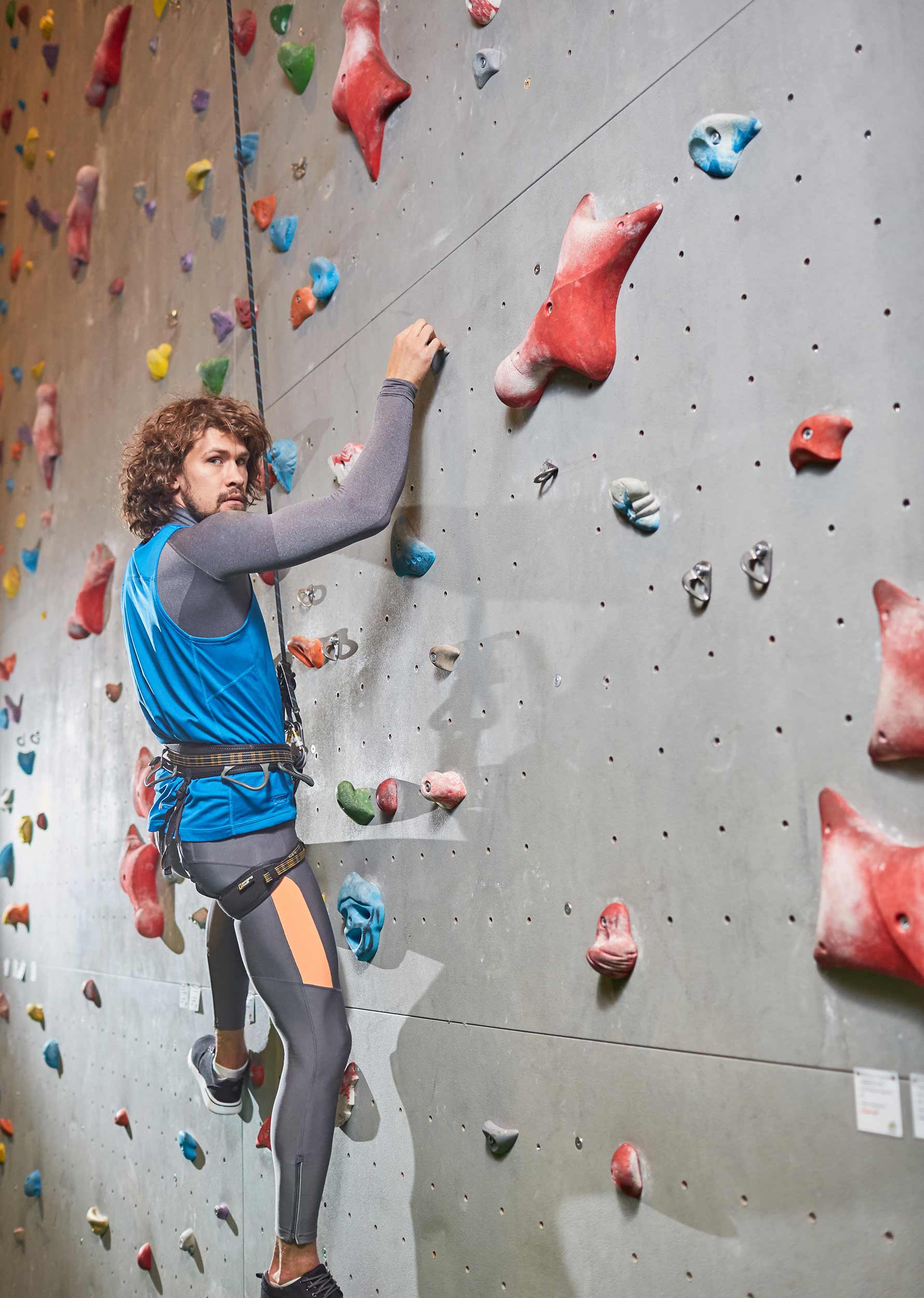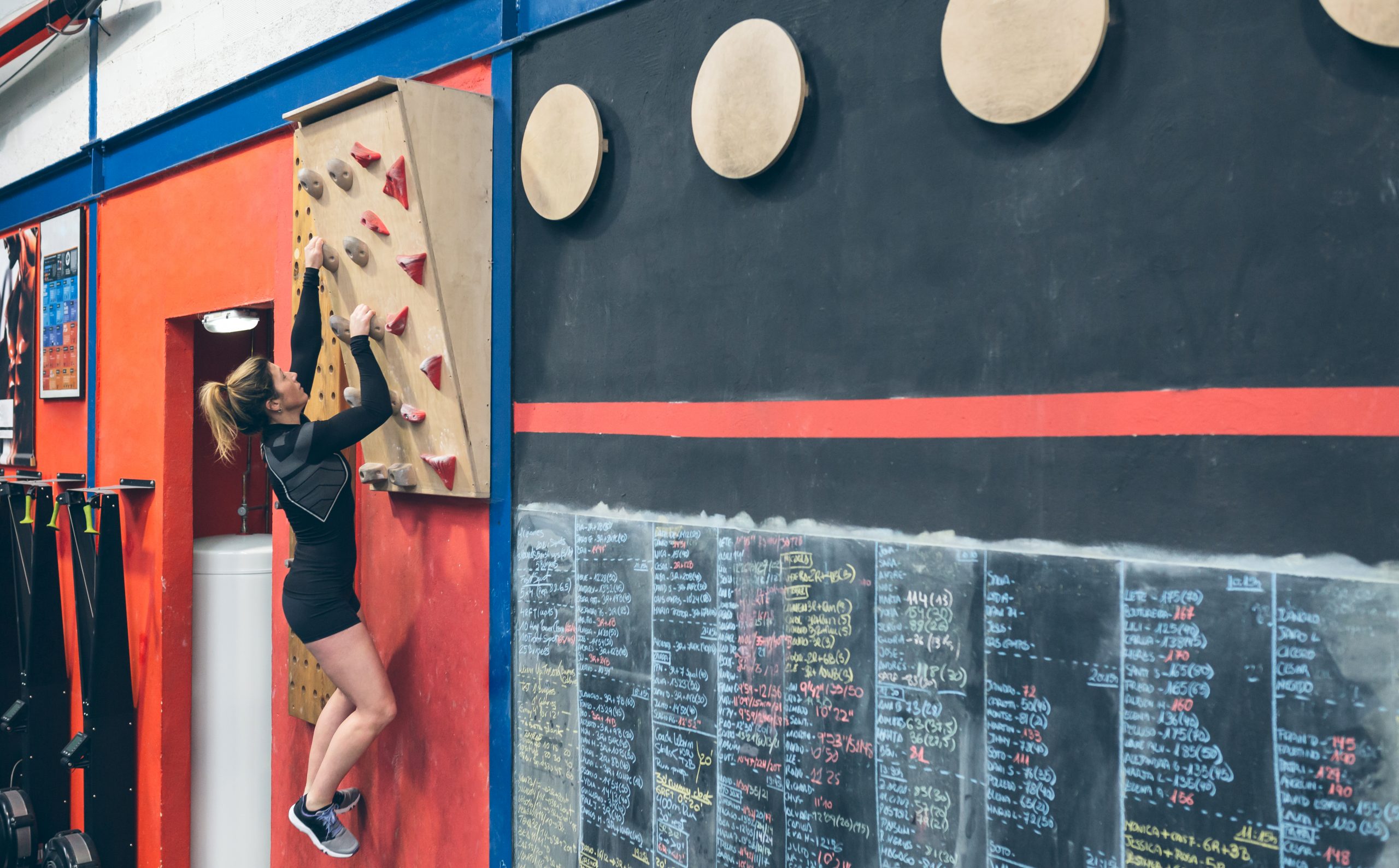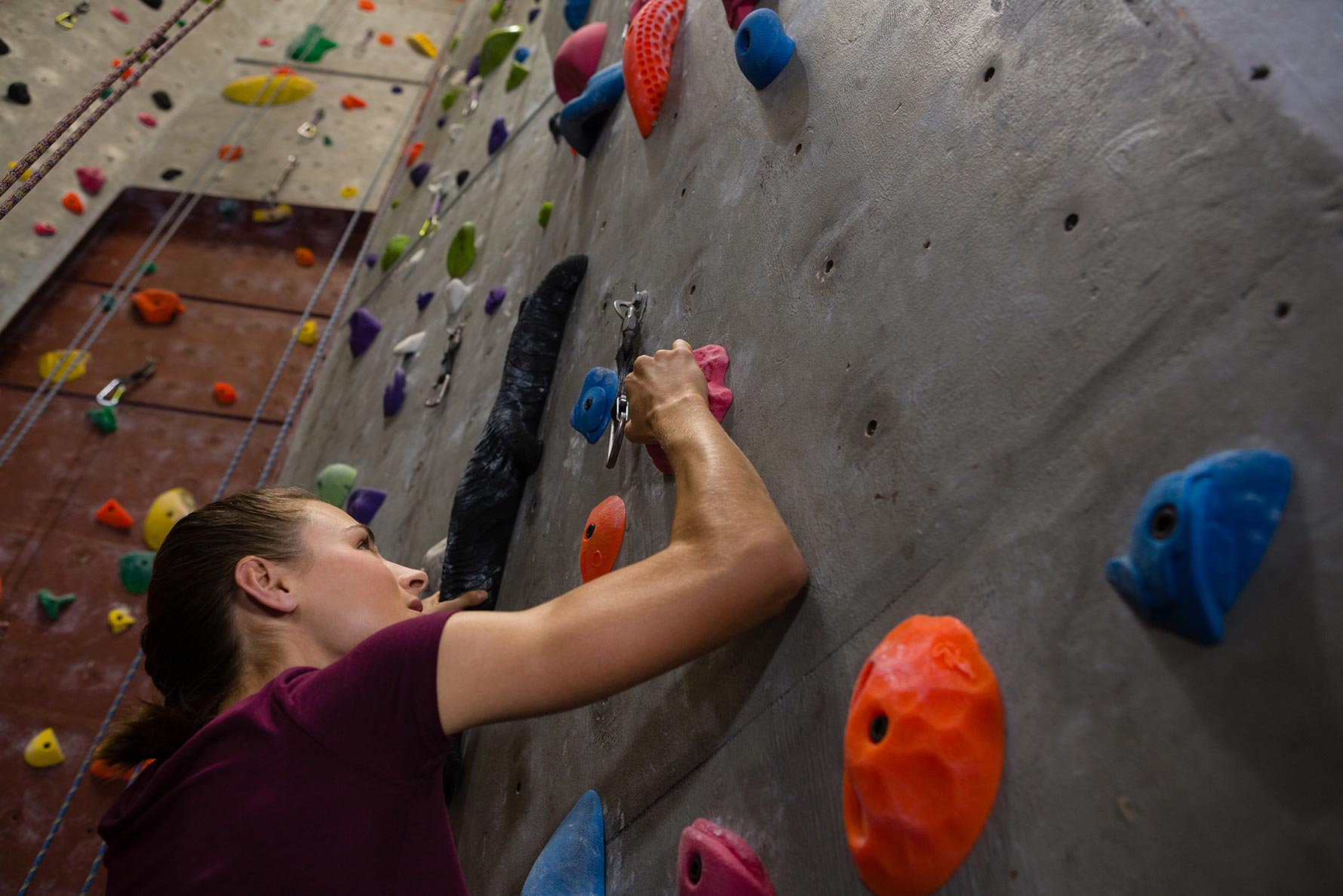Until recently, peg board could only be found in shopping centers and amusement parks. However, now almost every popular CrossFit gym is equipped with them. The reason is simple: pegboards are inexpensive and very effective in workouts. Such equipment is popular with athletes of all skill levels. Exercise with the peg board allows you to better develop the functionality and strength endurance of your body, achieving new sports results.
What is Peg Board?
Peg Board is a special flat wooden board with holes that simulates the movement of a climber when climbing a vertical rock.
Movements are carried out using climbing holds, which need to be inserted into special holes. In this case, the peg board is hung on the wall vertically, horizontally or at an angle. Lifting the body is carried out exclusively through the work of the arms and muscles of the shoulder girdle. The muscles of the legs are practically not involved in the movement.
The length of the board can be different: from 30 to 60 inches. The gyms are equipped with longer pegboards. Short models are great for home workouts. Alternatively, you can make your own peg board if you have minimal experience with circular saw, drill and angle grinder.

Benefits of Peg Board Workout
The effectiveness of this equipment lies in the fact that such a load, combining static and dynamic elements, is very specific. For the muscles of the shoulder girdle, accustomed to monotonous work with iron (barbell, dumbbell) in the gym, this will be a huge stress and an incentive for further growth.
Basically, you are working with your own weight in a peg board workout. You perform a large number of hanging pull-ups on two or one arm, in different planes and in different amplitudes, which loads a huge number of muscle groups of the torso and muscles-stabilizers. At the same time, the relief of your body improves, the ligaments and tendons become stronger and stronger, the grip strength is strengthened and the strength endurance of all the muscles of the torso develops.
What Muscles Do Peg Board Workout Work?
The main muscle groups that are involved in peg board workout: biceps and brachialis, posterior and middle bundles of deltoid muscles, muscles of the forearms and hands, latissimus dorsi and trapezius, as well as the rectus abdominis muscle.
The extensors of the spine, the anterior bundles of the deltoid muscles and the gluteal muscles stabilize the body during lifting.
Variations of Peg Board Exercises
In CrossFit workouts, an athlete can perform pegboard climbing in several variations. Let’s consider the features of each of them.
Vertical Climb

This is the kind of lift that you should start using the peg board with. The vertical lift is usually not particularly difficult for intermediate athletes, since the movement is anatomically similar to pull-ups on the bar or rope climbing. You should start the study of this exercise with a short board and gradually increase the load. Later you can do the workout on longer pegboards or increase the number of lifts done in one set.
Horizontal Climb

The horizontal lift is somewhat more difficult than the vertical one. To do this, you will need strong and resilient muscles in your arms and back, as well as developed biceps and forearm muscles. Throughout the movement, the arms are bent at the elbows, and the biceps, back deltas and latissimus dorsi are in constant static tension. Untrained athletes can easily get injured, as too much stress is placed on the elbow and shoulder ligaments.
Climb At An Angle

This movement combines elements of the two previous variations. You move both vertically and horizontally at the same time. Usually the peg board is positioned at an angle of 30-45°.
Angle lifts involve the most muscle groups. Almost all large muscles of our torso are involved in the work.
Peg Board Exercise Technique
So let’s take a look at how this exercise is technically performed.
Preparation
Start with preparatory exercises before you start studying pegboard climbing.
- First of all, these are pull-ups with different grip (wide, narrow, parallel, reverse, etc.). Aim for 20-25 pull-ups in one set. The ability to climb a rope without using your legs will not be superfluous. These two movements are very similar in biomechanics to the peg board exercise.
- For the horizontal lift, the Dumbbell Hammer Curl is the best preparation exercise, as it works great for the biceps and brachialis. These are the muscles on which most of the load falls when climbing a horizontal board.
- It is recommended that you start by climbing a vertical board, taking your time and maintaining an even pace throughout the entire set. There is no need to rush things. Even if you feel you are ready to climb the peg board quickly, you shouldn’t. In this case, you can stretch the ligaments. Adherence to the correct technique and a thorough warm-up help prevent this.
In this exercise, it is extremely important to observe the correct technique of execution, since there is a risk of injuring the joints and ligaments.
Doing Exercise
Pegboard climbing should be done as follows:
- Starting position: Insert climbing holds into the holes at a symmetrical distance. The back is perfectly straight, the gaze is directed upward, the forearms are slightly statically tense, the legs are relaxed. Legs can be fully extended downward or knees can be bent. Be sure to use a closed grip, as using an open grip, you will not be able to hold your own body weight for a long time;
- First move. If you are climbing a vertical peg board, then pull up a little in the starting position, then remove one handle from the hole and place it in the hole located 5-10 inches higher. The main thing is to be extremely concentrated on the movement and get into the hole the first time. Otherwise, your grip will weaken faster than all other muscles. If you are moving on a horizontal board, then remove one climbing holds from the hole and place it to the left (or right) of you. Do not relax your arm muscles for a second. When driving at an angle, follow the same technical guidelines;
- As soon as you have carried out the movement with one hand, then achieve complete repayment of inertia. Legs and back should be completely straight. Now you can continue to climb;
- Perform the movement with the second hand. Strongly tighten the biceps and forearm of the hand located above (or to the side). This will be your fulcrum and balance point. Hanging on one hand, rearrange the climbing holds and try to carefully get into the hole located at the same level. Extinguish the inertia and repeat the same movements until you reach the end of the board.
Professional athletes can complicate their task and perform a peg board workout using an additional weight suspended from the belt. This greatly increases the traffic intensity. However, a very high level of training is required. Novice athletes are not recommended to do this.
CrossFit WODs with Peg Board
The functional CrossFit WODs below are designed for intermediate to advanced athletes. They are contraindicated for beginners, since they give a strong axial load on the spine and contain technically complex exercises that require a developed musculoskeletal system and a trained cardiovascular system.
| Chain | 5 rounds:
Peg Board Vertical Climb (up and down) – 3 reps; Deadlift – 10 reps; Burpee – 10 reps; Pull-ups – 10 reps. |
| Maxim | 4 rounds:
Peg Board Horizontal Climb (round trip) – 2 reps; Jump Squats – 20 reps; Standing Barbell Press – 12 reps. |
| Mandalay | 3 rounds:
Peg Board Climb At An Angle (round trip) – 4 reps; Kettlebell Turkish Get Up (on both hands) – 10 reps; Sit-Ups – 15 reps; Barbell Thrusters – 20 reps. |





